Born in Zagreb where she graduated in 1958 from the School of Applied Arts.
Many solo and group exhibitions in Croatia and abroad. Address:
Opaticka 16
10000 Zagreb
CROATIA Stanko Stanicic about the Artist
Translation by Branko Ozbolt (a short version from 1987)
The name of Dora Pezic Mijatovic has been known in Zagreb’s art scene for more than two decades by now. She belongs to the generation of ceramists who learned their trade in the artistically fruitful fifties of the Zagreb School of Applied Arts. It is a generation which in the past twenty years or so has won an enviable place in this area of artistic production and still represents the leading nucleus of our modern ceramics. Firmly attached to the tradition of the Zagreb school of ceramics, Dora Pezic Mijatovic has created pieces of outstanding workmanship and individual artistic value. These two categories pervade and link her mutually different cycles and can be described as essential features of her art. (…)
Reliance on original folklore is characteristic of her first works and remains present throughout her artistic career. Folklore topics dominated amongst the works she presented in her first one-man show in 1966. (…)
In addition to these heads which have their origins in the native soil, she also started at that time to create ceramics tablets and plates which were less independent on national folklore and in which she gave vent to her imagination. These colourful ceramic surfaces sometimes remind on of leather reliefs and some of them are remotely associated with the exotic folklore of the Latin America. What also appeared at that stage in her wall reliefs, modelled heads and plates were some winding lines and spirals which would become a dominating feature of her next stage and represent a new integral chapter in her ceramic opus. The original folklore as her main inspiration in her interpretation of heads now gave way to nature. (…)
In her interpretation of shells and snails she is interested in the outer mantle of the shape, but also in what is going on in its interior. The result, characteristic of her art, is her vision of form, both exterior, whereby the emphasis is often on the internal occurrence, on the form returning to its origin. It takes a great deal of virtuosity and craftsmanship to cope with earth and its opposed forces of contraction and expansion to technically achieve this highly complex task.
Her steady hands guide the material in a gentle curve, without using force, and the final result of such building work are serene, rounded shapes, lovely in their nearly monochromatic purity. The dazzling colours of her earlier works give way to mature temperance, the shapes are enobled by glazing of restrained ivory shade with subdued accents of blue, turquoise or brown pigments. This range of colour is also applied in other works of the early eighties, such as expressive reliefs and plates painted with lyric motifs of birds and flowers. (..)
Her new cycle of foliated forms- the beginnings of which should be sought in the shapes of shells and snails – was launched in 1984. This time, however, her shaping work takes another course: the closed form of the vegetable volume is transformed into a surface and resumes a flowery, foliating pattern of a highly decorous quality.
|
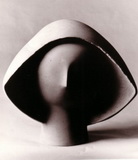 HEADS, 1995
Terra cotta |
|
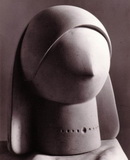 HEADS, 1995
Terra cotta |
| |
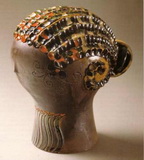 HEADS, 1995
Coloured and glased terra cotta |
|
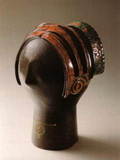 HEADS, 1995
Coloured and glased terra cotta |
| |
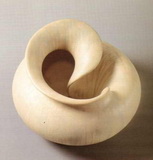 SNAIL, 1979
Terra cotta |
|
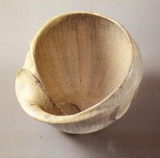 SNAIL II, 1981
Terra cotta |
| |
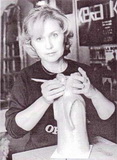 The artist in her studio
|
|
 FORM I
I prize on the exhibition Homage to the baroque, 1997 |
| |
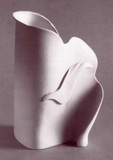 Object, 2004
White clay |
|
 Object, 2004
White clay |
| |
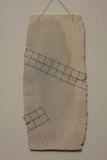 From the exhibition 2004
|
|
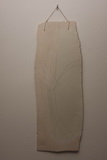 The artist with art historian Stanko Stanicic
|
| |
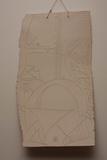 From the exhibition 2004
|
|
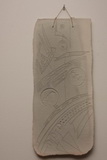 From the exhibition 2004
|
| |
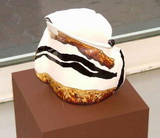 From the exhibition 2004
|
|
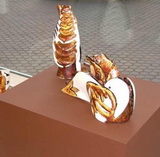 From the exhibition 2004
|
| |
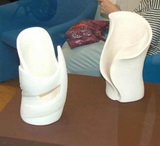 From the exhibition 2004
|
|
 From the exhibition 2004
|
| |
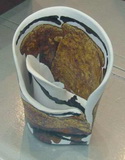 From the exhibition 2004
|
|
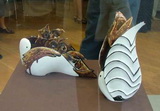 From the exhibition 2004
|
| |
 From the exhibition 2004
|
|
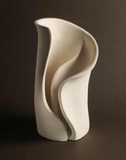 From the exhibition CERAMICA MULTIPLEX, of The International Festival ofPostmodern Ceramics, 2005
|
| | | |
|
|
| |
|
